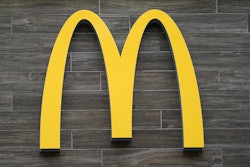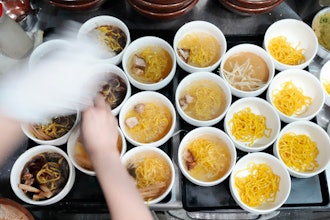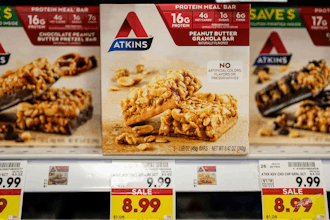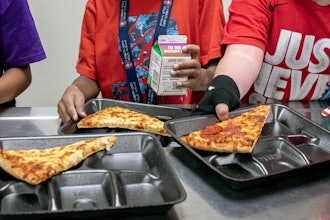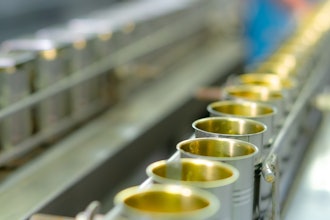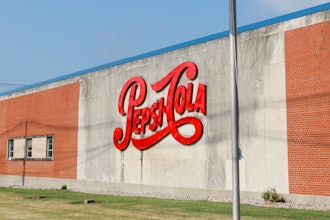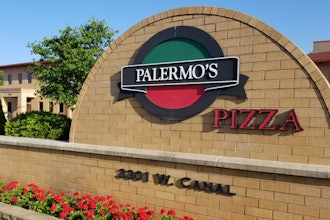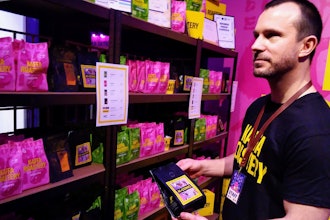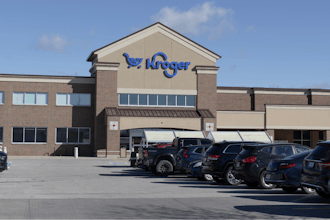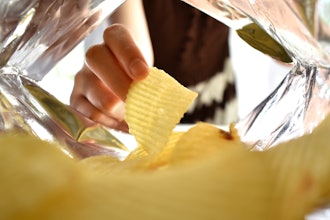
 Miguel Campos
Miguel CamposSince January 2018, egg prices in the US have risen by 121 percent. Currently the product sits at more than four times the cost it was a year ago. However, eggs are not the only raw material suffering from volatile costs. Miguel Campos, export sales manager at foil packaging supplier, Advanta, explains how to tackle this problem by taking control of production variables.
Fluctuating raw material costs has long been a concern for food manufacturers. Primary examples of volatile products include common crops, oils, chemicals and dairy products, such as milk and eggs. As these ingredients are used in so many recipes, volatile pricing can have a high influence on a manufacturers bottom line. Unable to actively manage this issue, food and drink business leaders must find other ways to increase their profits.
Reducing Offcuts And Rejects
To minimize the impact of raw material costs, businesses should strive to use every ounce of the ingredients available to them. For processors, this means reducing food and packaging waste wherever possible.
Reusing offcuts or rejects in the process can reclaim use of a product that would have otherwise gone to waste. In fact, Nestle implements this technique for the manufacture of British chocolate bar, KitKat. The brand uses broken rejects bars as part of its wafer filling — rather like chocolate bar inception.
However, breakages and rejects are not the only waste associated with raw ingredients. Many manufacturers unnecessarily waste inventory because of inaccurate forecasting. Due to poor planning and stock management, they assume they need to produce a certain number of products and therefore, order enough raw ingredients to fulfill these needs.
However, when they end up needing less product, whether that is due to reduced orders, unseasonable weather or changing consumer habits, these perishable goods go to waste. With better and more accurate forecasting models, food manufacturers can spend less time guessing and more time maximizing the ingredients they have.
Taking the same mentality as Nestle’s KitKat-ception, recycling unused packaging can also plays a part in profitability. Scrap aluminum, for example, holds its value incredibly well, and unused cut offs can provide a healthy reimbursement. This provides manufacturers with the ability to resell some packaging waste back to the supplier for recycling.
Packaging recyclability also has a knock-on effect for the consumer. Due to the influx of negative media coverage about plastic packaging, many consumers are opting for plastic alternatives, due to this increased awareness of environmental problems associated with plastic waste. While this doesn’t have a direct impact on production waste, it can encourage sales to environmentally-conscious customers.
Extending Shelf-Life Through Packaging
Another way of getting the most out of raw materials is by reassessing the function of different packaging types. For example, if you choose a good quality, aluminum foil tray, then there are a number of technologies that work with this material choice to prolong a products shelf-life.
Let’s kick things off with modified atmosphere packaging (MAP). This describes the modification of the air inside the package, displacing normal air for a composition of gases that is low in oxygen.
For respiring products, such as fresh fruit and vegetables, the aim is to minimize its respiration rate. For non-respiring products, such as cooked poultry or fresh pasta, the goal is to minimize microbial growth as the main spoilage parameter.
You could also use vacuum packaging. This does what it says on the tin, by sucking the air out of packaging. This limited oxygen environment reduces microbial activity and respiration, as with MAP.
The removal of most of the oxygen impedes the ability of oxygen-breathing microorganisms, meaning they cannot grow and spoil the product. The lack of oxygen also reduces the amount of spoilage due to oxidation – the same process that causes apples and bananas to turn brown.
Getting the composition right can result in highly extended shelf lives for MAP packed products. Fresh poultry, for example, normally has a shelf life of three to ten days but can withstand six to 21 days with MAP.
Prolonging the shelf-life of products will extend the amount of time a product can be store in a warehouse, in transit and on the supermarket aisles. For manufacturers with fluctuating order volumes, this can dramatically reduce the amount of wasted products — or refusals from retailers due to short shelf-lives.
Optimizing Supply Chains
Aside from waste reduction, it is well known that supply chain management is an integral part of success and customer satisfaction. Food manufacturers depend on effective supply chains to avoid material shortages that would otherwise shutdown production. In fact, an unexpected delay that causes a food plant shutdown of just one hour can cost thousands of dollars depending on the application.
Firms value supply chain managers because they help control and reduce supply chain costs. This can result in dramatic increases in firm profits. For instance, US consumers eat 2.7 billion packages of cereal annually, therefore decreasing US cereal supply chain costs by just one cent per cereal box would result in $13 million saved over a five-year period.
While upfront costs of suppliers are an important consideration, choosing suppliers solely on prices isn’t the way forward in boosting profits. Quality should always remain at the forefront of why you choose a supplier. It’s important to involve your quality department in this process, to audit potential suppliers and assess samples.
Then comes important considerations on delivery and flexibility. If deliveries are on time, and of the right quality, your processes can continue to run. If there is a delay, you might find yourself wasting ingredients and not meeting customer timelines. Suddenly, just going for the cheapest supplier doesn’t seem wise.
While the costs of eggs may be hard to predict, there are factors in your facility that you can control. By optimizing the use of your ingredients and packaging, extending product shelf-lives and strengthening your supply chain, your bottom line needn’t be as volatile as certain raw materials.
About Advanta
Advanta is one of the leading foil food container manufacturers in Europe. The company headquarters in Cannock, United Kingdom is purpose-built and establishes new standards for the whole packaging industry. The business operates globally and is able to offer regional support in Australia, Asia, South America, Africa and the USA.






